What I Saw in the Destruction of Gaza
The view of reality that answers most contradictions between Torah and science.
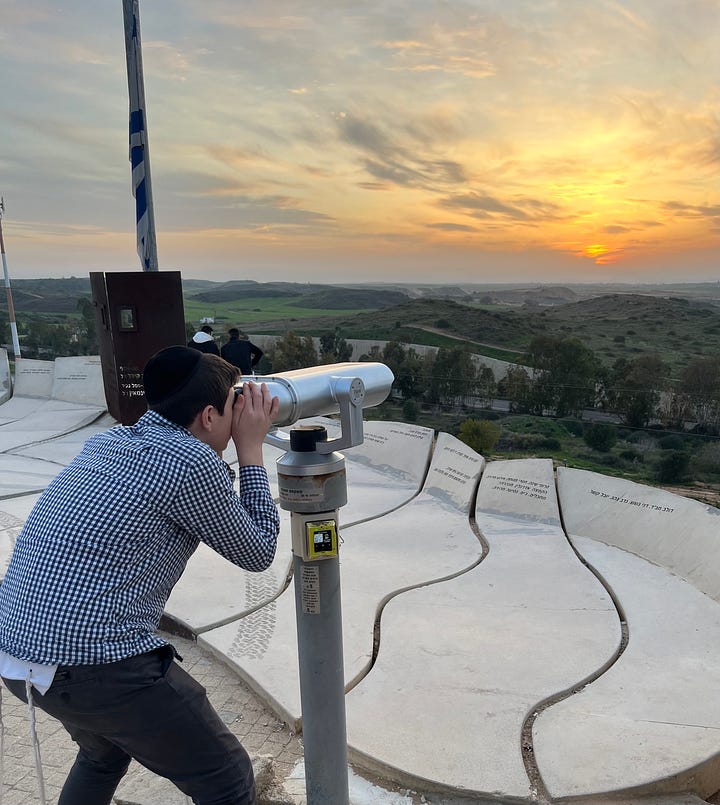
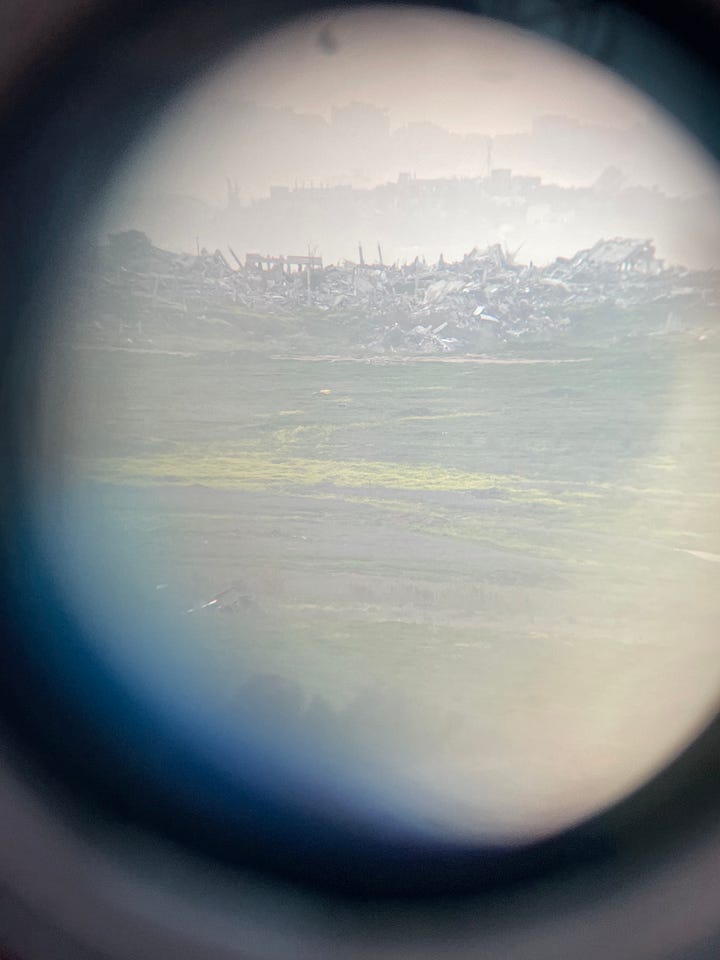
For me, one of the most impactful moments of our Foraging Journey From Goliath to Hamas was at the lookout outside of Sderot, peering straight into the destruction of Gaza through a telescope.
I’ve read a lot about what’s happening there, and have even seen some pictures. Those words and images contain far more information than the grainy circle showing a few rows of ruined buildings.
But they were all detached from my sensory experience.
I wasn’t seeing, hearing, smelling, tasting, or touching the strip of land from which 17 months (and counting) of pain and destruction have reached all over my country and beyond. None of my senses were sending data to my brain from the place where scores of my fellow Jews are still being held in Hamas’s dungeons.
It was all lines, dots, and pixels. Images without reality.
Oddly enough, hearing about what’s happening from family and friends is far more real than seeing it online: even if they read it on Ynet or Times of Israel, my ears are hearing the pain from a real person that cares.
But there’s nothing like actually looking into Gaza and seeing tangible results of our struggle there.
Through the cloudy lens of the telescope, I saw:
The murderers of October 7, together with the Gazans who actively and passively supported them, and the innocent civilians who didn’t (I’ll let you decide which group is larger).
Israeli soldiers - I personally know some still there - who dropped everything to serve for months on end under insanely tense conditions, risking their lives daily to break Hamas and free our hostages. Hundreds didn’t make it back alive, thousands were physically or emotionally wounded for life.
Our hostages who remain in brutal captivity, with only a few miles separating them from millions of Jews who think of them every day. Do they know we care?
In our tech-based world, it can be hard to discern between direct experience and detached information gleaned from machines.
But if we want to live in reality, we must invest in directly connecting with the world around us, exactly how it is: raw, visceral, unfiltered.
Otherwise, probably without even knowing it, our lives can become the plastic, glass, and metal of the devices that block us from the actual pleasures and pains of life on earth. Our reality might actually become virtual.
This is one of the huge benefits of - you might have guessed this was coming - foraging for edible plants in the natural world. In one immersive experience, we’re walking through life looking for life, touching and tasting the life we find, and nurturing and sustaining our lives. For real.


Direct human experience creates our reality even when scientific inquiry proves that “the truth” is something different.
We all talk about the spectacular sunset (not earth-set) we saw yesterday evening, and everyone knows the sky is blue (not black). These observations, and countless others like them, aren’t false: they are the reality of how our minds perceive our world. If they aren’t scientific truths, they are human truths.
This perspective is the simple answer to many of the alleged contradictions between Torah and science, both in questions of faith and law.
One famous discrepancy concerns whether the earth revolves around the sun or the other way around. Torah sources from Psalms (113:3) to Maimonides (Hilchos Yesodai HaTorah 3) consistently present the geocentric model that was commonly accepted for most of history. Modern science, we might think, has “proven that wrong,” because Copernicus and Galileo actually checked things out and saw how it’s actually the opposite. The prophets and Sages, poor things, were stuck in the primitive pseudoscience of the ancient world.
But that’s nonsense.
The Torah isn’t a physics textbook. It’s a manual for living meaningful, balanced, and compassionate human lives. For that objective, the Torah doesn’t care what specialized professionals might observe with sophisticated instruments. All that matters is how its audience - you and me - experience and interact with the world in their daily lives.
Because we see the heavens - and God beyond them - as above us, circling around us day and night, that’s the reality in which the Torah teaches its timeless truths. God could have created us in a way that we see our planet going around the sun. But God didn’t do that, because God wants us to perceive our world as the lowliest place in the universe - and the place to which all the goodness of Creation flows.
Because we look up to the heavens - not sideways - Isiah (40:26 ) was able to write:
“Raise your eyes to above, and see Who created all of these [stars and constellations]”.
God looks down to earth through legions of angels. We look up to God through the incomprehensibly complex vastness of the cosmos.
This is just a taste, based on the Rambam’s writings, of what we can learn from appreciating our direct human experience in which we’re situated in the center (that is, the bottom) of the sky.
There’s so much more to elaborate about this example, and countless other instances in every area of Torah. I hope we return here another time. But already today we’ve seen how far the value of direct experience reaches: from the ruins of Gaza to the meaning of the universe.
Thank you for reading Healthy Jew.
Here are 2 great paths to continue the journey:
Also check out this intro and index to explore hundreds of posts about our 3 Healthy Jew topics: Wellness with Wisdom, Land of Life (Israel), and Sensible Spirituality.
Finally, always feel free to reach out here with any comments, questions, or complaints:
I look forward to hearing from you!
Be well,
Rabbi Shmuel Chaim Naiman
Please note: All content published on Healthy Jew is for informational and educational purposes only. Talk to a qualified professional before taking any action or substance that you read about here.

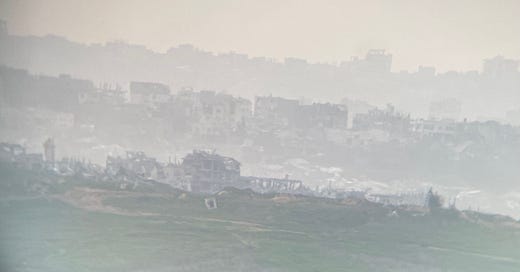


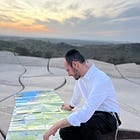

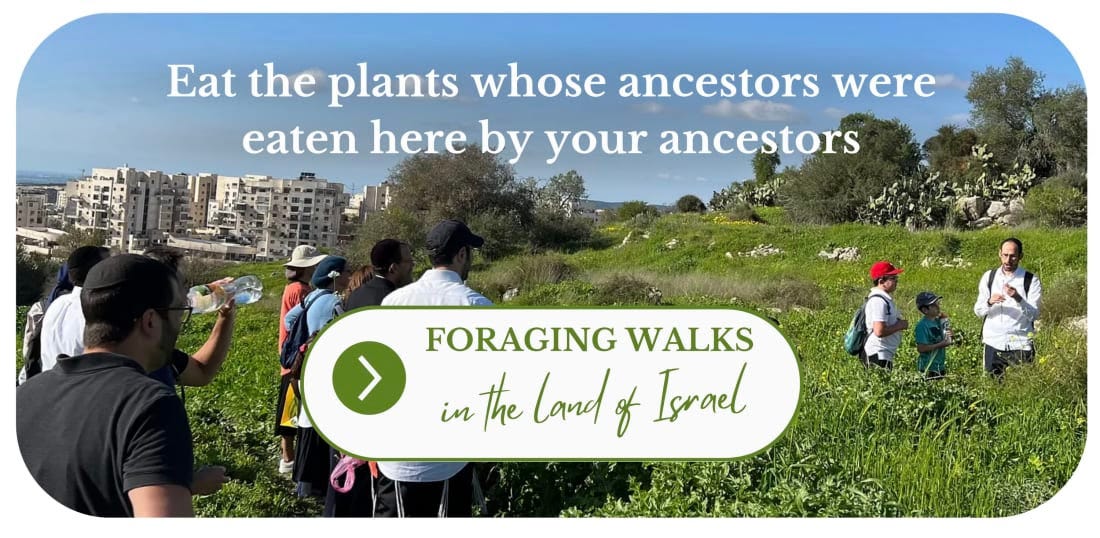
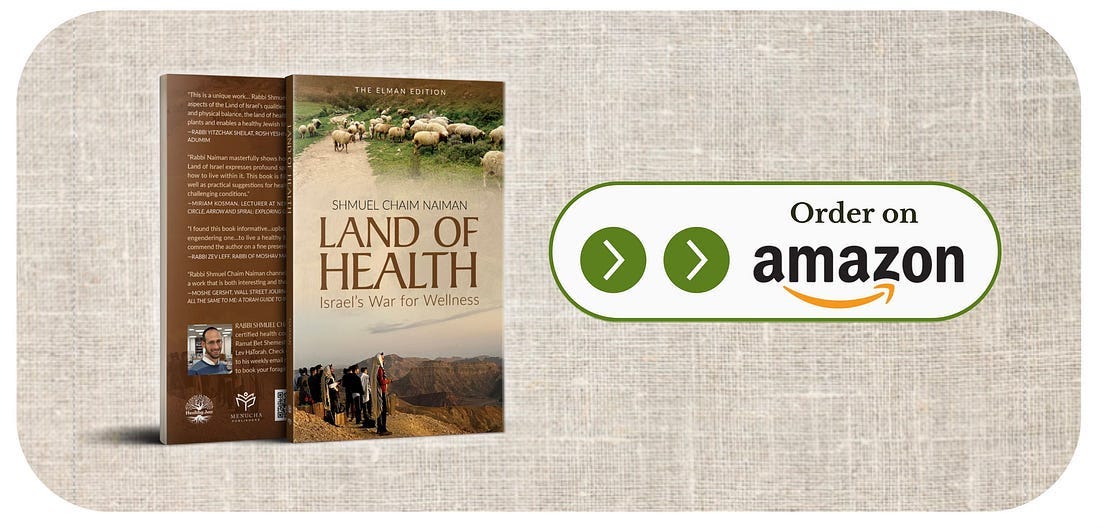

Consider this, perhaps the poet is better equipped to record the real than the scientist, as in the discourses in Job; “ “Have you entered the storehouses of the snow
or seen the storehouses of the hail,
which I reserve for times of trouble,
for days of war and battle?
What is the way to the place where the lightning is dispersed,
or the place where the east winds are scattered over the earth?
Who cuts a channel for the torrents of rain,
and a path for the thunderstorm,
to water a land where no one lives,
an uninhabited desert,
to satisfy a desolate wasteland
and make it sprout with grass?
Does the rain have a father?
Who fathers the drops of dew?
From whose womb comes the ice?
Who gives birth to the frost from the heavens
when the waters become hard as stone,
when the surface of the deep is frozen?”